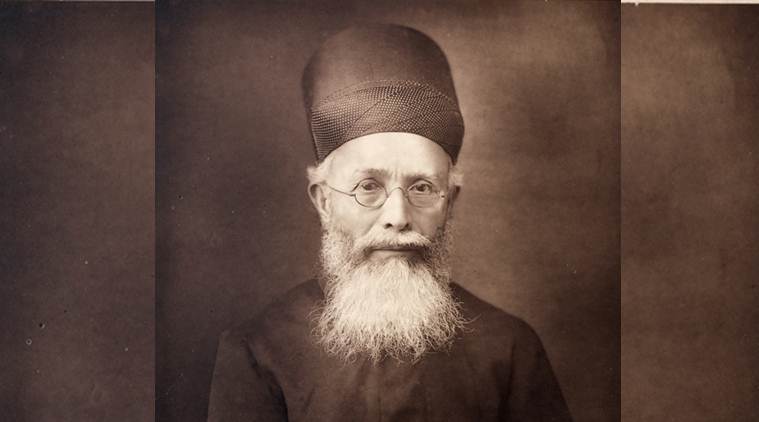 Dadabhai Naoroji
Dadabhai Naoroji
Dadabhai Naoroji was an Indian first. He was the first modern Indian economic thinker, the first Indian elected to the British Parliament, and the first leader to establish swaraj as the goal of the Congress. But Naoroji was an Indian first in another important way. Throughout his career, he stressed on an Indian national identity which overrode religious, caste, class or ethnic differences. “Whether I am a Hindu, a Muhammadan, a Parsi, a Christian, or of any other creed, I am above all an Indian,” he told the Congress in 1893.
Over a century after his death, India is in critical need of remembering Naoroji’s brand of nationalism. In all his political activities, the Grand Old Man of India, as he was known, strove to be inclusive. Today’s stark majoritarianism, under the banner of a very different form of nationalism, represents a striking betrayal of the principles that Naoroji bequeathed to India.
As a Parsi, a member of a small but highly influential community, Naoroji was especially attuned to minority concerns. It helped that he grew up in Bombay, where, in the 19th century, all political ventures had to be cross-communal in order to succeed. He listened to Maharashtrian assessments of colonial exploitation, compiled economic data with a Konkani Muslim, and ran a newspaper with a Kapol Bania. His first political venture drew in people from all across India. This cosmopolitanism played a defining role in launching Indian nationalism, which would have been impossible without deep personal networks across communal divides.
After the Congress was established in 1885, he laboured to make it reflective of India’s diversity. Naoroji expended great effort to reach out to Muslims, particularly after the educationalist Sayyid Ahmad Khan repudiated the organisation in 1887, and after a wave of communal violence wracked northern India and Bombay in 1893. He mentored Joseph Baptista, an East Indian Christian who later became an associate of Bal Gangadhar Tilak. And he overcame an anti-Congress reaction instigated by his fellow Parsis.
After he was elected to the British Parliament in 1892, Naoroji declared himself to be an Indian representative, someone who would fight on behalf of all of his countrymen and countrywomen. This was immediately challenged by several British Conservative MPs. How could a Parsi represent a country with a Hindu majority and a sizeable Muslim minority? How could anyone represent India when, these Britons claimed, India was not a nation but a collection of squabbling communities?
In December 1893, Naoroji returned to India in order to preside over the annual Congress session in Lahore. His journey from Bombay to Lahore was an affirmation that someone from a minority community could represent all of India. In Bombay, Naoroji was welcomed by around 5,00,000 people — half of the city at the time —and honoured by Hindu priests and the city’s Muslim qazi. He was received by millhands in Ahmedabad. Hindus and Muslims in Delhi placed Naoroji at the head of a roaring procession down Chandni Chowk. In Amritsar, Sikh granthis led a special service for the Indian MP at the Golden Temple.
In Lahore, Naoroji was paraded past temples, mosques, and gurudwaras. To mark the Congress session and welcome its president, Muslim poets recited Urdu couplets and Hindu women sung bhajans. And it was here in Lahore that Naoroji declared to Congress delegates that they were Indians first — that they were “above all” Indians in spite of their differing backgrounds.
The Indian press issued a fairly unanimous verdict: These demonstrations revealed the power of inclusive politics. A Bengali paper declared, “this time the Hindu, the Musalman, the Sikh, the Bengali, the Hindustani, the Mahratti, the Parsi, the Panjabi and the Madrasi have spoken with one voice.” Newspapers also offered a stark repudiation to the charge that a minority member could not represent the country. “The fact can no longer be denied by the most prejudiced Anglo-Indian … [who] will find it difficult in future to forget that Mr. Dadabhai is the real representative of the whole of India.” Those words were written in the columns of the Mahratta, Bal Gangadhar Tilak’s paper. Some cartoons from the early 1900s depicted the Grand Old Man, a Zoroastrian, as a Hindu sadhu meditating under the banner of swaraj.
The Indian nationalism of Naoroji’s generation was far more popular and pervasive than is commonly believed. But it did have notable limitations. Naoroji was blind to the issue of untouchability, a glaring omission given his close study of Indian poverty. He endorsed swadeshi but hesitated about tactics he saw as unconstitutional, such as mass boycotts and strikes. Many early nationalists, however, were open-minded, progressive, and welcomed criticism. It is likely that if Naoroji had lived for one or two more decades, he would have seen the limitations of his earlier views and embraced some of the ideas propagated by Gandhi’s generation.
What would Dadabhai Naoroji make of India today? He would be troubled by the chauvinism and anti-intellectualism that animates the current leadership. These run counter to the traditions of Indian nationalism. With the horror of 19th century famine victims in mind, he would be furiously campaigning for relief of migrant workers caught amidst lockdown restrictions. He would, unfortunately, see a parallel between contempt for the poor in his day and ours.
Above all, he would be saddened by the atmosphere of overt majoritarianism, as well as the cynical deployment of communalism even in the face of a calamity like the COVID-19 epidemic. Such observations and reactions might cause Dadabhai Naoroji, India’s first nationalist, to be branded as an “anti-national.” And that is a tragic irony which we must be left to ponder over.
Patel is Assistant Professor of History at the University of South Carolina and the author of Naoroji: Pioneer of Indian Nationalism